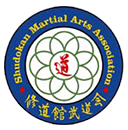In many dojos, it’s common to see students begin and end practice with mokuso (黙想)—a brief meditation to quiet the mind. This tradition reminds us that Japanese martial arts are not only about physical technique but about cultivating the mind and spirit.
Historically, the samurai (bushi) integrated spiritual disciplines like Zen and Shingon Buddhism into their training. Zen’s focus on discipline, awareness, and acceptance of fate resonated deeply with the warrior class. Meditation improved their focus and calm under pressure, leading to the belief that mastering combat required mastering oneself.
Over time, meditation became a vital part of martial training. Concepts such as mushin (無心, “empty mind”), fudoshin (不動心, “immovable mind”), and zanshin (残心, “remaining mind”) described mental states of clarity, emotional stability, and alert awareness. These ideals, often cultivated through meditation, allowed warriors to act decisively and without fear.
Train Your Mind and Body at a Japanese Martial Arts Association
SMAA is a martial arts association for all martial artists who want to be part of a community of dedicating to keeping the spirit of budo alive. If you love your art and want to share it with others, give us a call at (734) 720-0330 or submit a contact form to talk about joining!
















